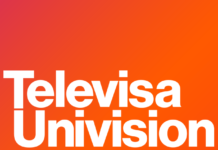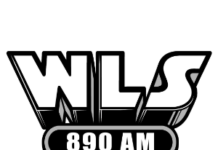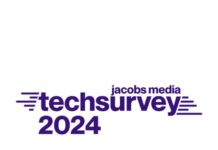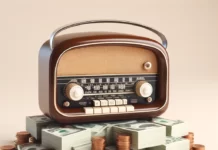
In our continuing series with industry leaders about the 2022 Jacobs Media Techsurvey last week, which showed a downward trend line of radio listenership, today we hear from Vince Benedetto, Sean Bos and Buzz Knight.
Vince Benedetto
CEO
Bold Gold Media
[email protected]
“It’s important to keep in mind that radio is primarily a local business. As I frequently remark, radio is a local business because of the way it is consumed. If we try to make it a national business and compare it to national businesses, we will be disappointed in the end results. It’s of course critical to monitor national trends, but ultimately the value, interest, importance, influence and reach of a local radio station will mostly be determined by how it is presented, promoted, nurtured, and ensconced within the local environment in which it lives and breathes. Nearly all of our Bold Gold stations operate within small or medium markets and nearly all of our stations reach and engage more listeners now than in years past. In our markets how we’ve managed this, in part, is with:
Decentralized Operations: Local control and decision making within the market area is imperative. Radio is an organic thing. Be sure to have the right people in leadership, programming, production, news, etc. To be genuinely local does not merely mean talking about local things on-air. Radio is most powerful when it is genuine and authentic and is localized throughout the operational loop. Being “in the community” is very different than being “of the community”. To do this, however, you have to have great people. Find them. Keep them. Trust them.
Supreme Production: Be sure to always have outstanding commercial production and creative. We try to limit stop sets to no more than 3-4 commercials and strive to make sure every single commercial is top-shelf. This creates a win-win for both the listener and the advertiser. Just as great personalities and great programming are needed for a great radio station, so is great commercial production.
Be Seen to Be Heard: Be sure your station teams are also leaders within the community off-air. Be everywhere all the time. Stations should be represented wherever decisions are being made within the community. Have your station team members volunteer to be a part of local non-profit boards, support local chambers and social groups. Be sure to be a force multiplier for everything good that is happening in your community. Local radio, at its highest and best, is an amplifier of the hopes, dreams, passions, and loves of your home town. Being ‘of the community’ is not something that happens easily. It requires a philosophy throughout the company that believes in and values service. Making great radio is not limited to what goes out over the airwaves, it is runs deeper and has a life off-air that is of equal importance to the community.
Be Forever Entrepreneurial: It’s important to understand that with so much advancement in technology there is going to be disruption in the audio and marketing space. Disruption can be a threat, but it always presents opportunities too. Be mindful and excited by the opportunities. We have to be able to do a lot of things well at once.
In Bold Gold we’ve continued to strive to live up to our slogan: On-Air. Online. Digital. Mobile. Social. Live & Local. This has served us extremely well thus far…
Sean Bos
Branding & Analysis Director
Harker Bos Group.
[email protected]
Be bold, take chances. In the 20th century, the radio industry achieved the highest penetration of any medium. We did this through innovation, being bold, taking chances, and showing a willingness to try new things. Let’s bring that ethos of success into the 21st century and think like a start up – fail fast, fail often. The localism inherent to radio allows you to try new things and then quickly learn if it is successful or not.
Listen to your audience. Web-based research gives us near-instant knowledge of what your audience wants. Use that valuable information to deliver what they said they want. Do not second guess!
Hire young. Too often those that have been in the industry for a while speculate what younger demos want to hear. Hire young people that can tell you what they and their peers are interested in.
Post-Pandemic Gold Rush. The pandemic threw our listening habits up in the air. Now is the perfect time to solidify your brand. You can reclaim your old listeners who may have drifted away, and grab new listeners from stations who aren’t taking advantage of this opportunity.
Be visible. From sporting events, to county fairs, to concerts, people are getting out again. Be the first brand people see when they attend an event and have them associate your name in this new world and a good time!
Buzz Knight
CEO
Buzz Knight Media
[email protected]
1) We need to take on the problem of bloated commercial loads.
Are Radio companies ever going to take this problem on or do they hope it magically is going away? I generally don’t see companies admitting there is a problem and working on any strategy to turn the tide. There is an occasional mention of raising the rates, but those comments don’t go in tandem with a mention of lowering inventory. As streaming consumption increases how can traditional radio compete with satellite or pure plays when playing 14 minutes an hour?
This topic is Code Red.
2) The industry needs to place a more significant value on talent.
Talent retention, Talent Management and Talent creation. This is a differentiator for radio, and it continues to be minimized in too many instances. Companies are trying to save money because they are strangled by debt, and they care less and less about talent. Additionally, the concept of a talent bench seems to have disappeared. I have seen Major Market stations with situations where a talent departs and there isn’t a succession plan.
Generally when there is one the solution is only created because it is a cheaper one.
Where is the next generation of talent?
3) The concept of the “fresh angle” has disappeared in favor of the “we’ve always done it this way” response.
Morning show bits rarely evolve. Sameness is rampant. New marketing and promotional ideas are rarely done because a brand manager is afraid to ask for permission. If it costs money it is generally not even a conversation starter and that doesn’t even include when the need to run it through the legal department occurs.
4) The business hasn’t keep up with they way audiences crave engagement with their favorite brand.
With the exception of the sports format which is built on audience engagement the rest of the business has given up on audience engagement. When you don’t have living and breathing people for audiences to engage with how can engagement occur?
5) The environment needs to allow for innovation to occur.
Debt makes it next to impossible for this to be part of the fabric of a company but it is a necessity. New formats need to be experimented with in some manner that can lead to the building of a millennial or Gen z strategy. There needs to be a forum within companies to take an idea and incubate it, iterate and innovate it. The three I’s need to be a pillar for the future.
Check out our entire series on this issue:
Day One – Steve Smith, Mike McVay, nate Deaton
Day Two – David Santrella, Joel Oxley, Ed Levine
Day Three-Bud Walters, Lee Abrams, Alan Burns
Day Four – Nick Martin









Your passion for the subject shines through in every word. It’s evident that you genuinely care about the topic you’re discussing.
so is great commercial production. Thank
I also enjoy reading your entire post. I am these days busy with my academic task and looking to find a dissertation helper who can write my thesis papers.
Everyone knows commercial loads are a problem, but when it’s your ONLY source of revenue, what can you do? The only solution is to find a secondary revenue source that will be big enough to replace commercials. Any suggestions?
Buzz…your ideas are what radio is and needs to be again. Unfortunately, it reminds me of what I told my mother when she was telling me what I needed to do to be a better person when I was 10 years old…I said, “I hear you, but I’m not listening.” She still brings it up regularly, and she’s 90 and I’m 67. This is radio in a nut shell.
In twenty years read your comments and smile!
“Day One – Steve Smith, Mike McVay, nate Deaton
Day Two – David Santrella, Joel Oxley, Ed Levine
Day Three-Bud Walters, Lee Abrams, Alan Burns
Day Four – Nick Martin”
No offense, but when we see the same names for decades, and the business has only declined, we are left with two observations:
1) No one listens to what these people say.
2) What they’re saying is incorrect.
The industry needs to toss out most of the old, lazy PD’s who have really only mastered the craft of VT’ing their boring shows and sending out tons of emails all while making excuses why they don’t create great social media content. When the ratings are good it’s because they’re amazing, but a weekly dip happens and they blame the morning show.